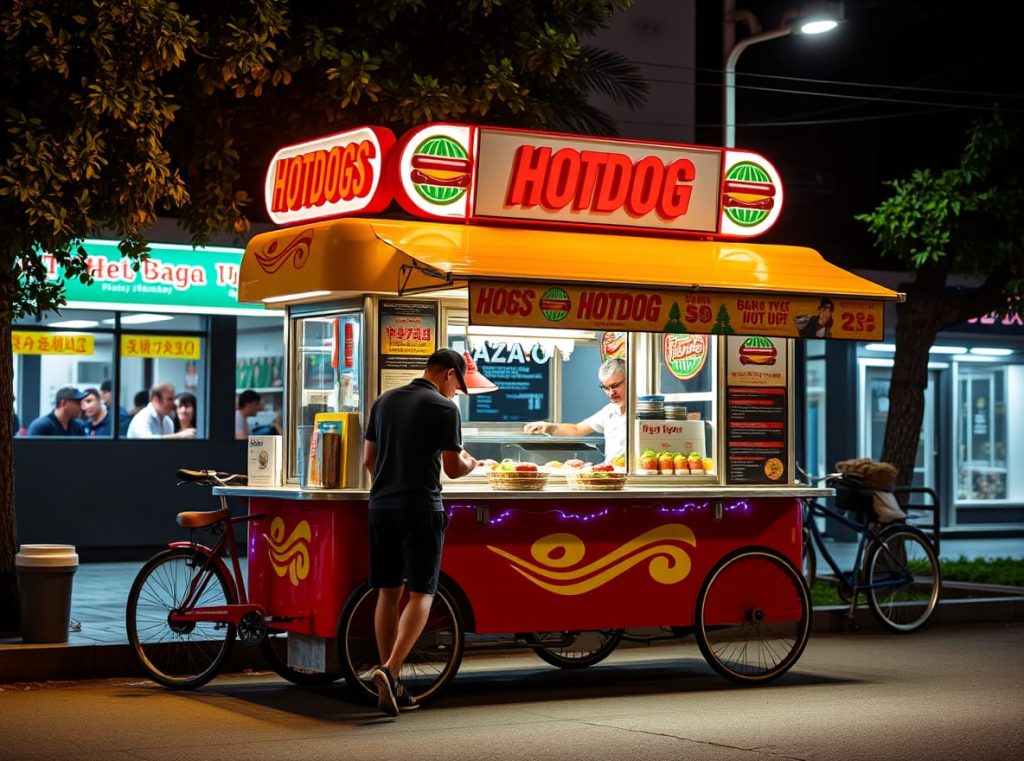
So, you’re thinking about starting a hotdog stand foodcart business in the Philippines. Here’s the thing: a hotdog isn’t just a food item. It’s a universal experience that transcends classes and age groups, from the schoolyard to late-night cravings. But turning that into a successful business requires more than just a grill and some buns. It’s about understanding the culture, the market, and a few trade secrets to keep those hotdogs sizzling and the customers coming back for more.
Let’s walk through this entrepreneurial journey with some personality and heart.
Step 1: Know Your Why
Before diving into the logistics, ask yourself: Why a hotdog stand? The simplest answers are usually the best. Maybe it’s the affordability and wide appeal. Maybe you’ve noticed a gap in high-traffic areas like schools, transport hubs, or busy streets. Define your purpose clearly—it’ll help shape every decision from here on out.
Step 2: Do Your Market Research
In the Philippines, the foodcart industry is fiercely competitive yet full of opportunities. To stand out, you need to know:
- Who your customers are: Are they students looking for a quick snack, office workers on lunch breaks, or night owls craving something savory?
- Where they are: High-traffic areas are key. Think malls, bus terminals, or universities.
- Your competition: Who else is selling hotdogs nearby? What are their prices? Are they serving up something unique? Learn what’s working for them and what isn’t.
Step 3: Decide on Your Menu
Sure, you can go with the classic hotdog, but why stop there? Consider adding:
- Variations: Cheesy hotdogs, chili hotdogs, hotdog on stick and hotdog on Bun, or even Korean-inspired corn dogs.
- Toppings and Sauces: Filipinos love flavor. Offer options like cheese sauce, garlic mayo, spicy ketchup, or even bagoong (fermented shrimp paste) for a local twist.
- Combo Meals: Pair your hotdog with fries or a drink for a value meal.
The goal? Offer something familiar but with a twist that sparks curiosity.
Step 4: Create a Business Plan
This part may feel overwhelming, but a solid business plan will act as your north star. Cover these basics:
- Startup Costs: List all expenses, including cart purchase or rental, permits, equipment, and initial inventory.
- Operational Plan: Outline your daily operations. Who will manage the stand, and how will you source ingredients?
- Marketing Strategy: From social media campaigns to simple word-of-mouth, decide how you’ll attract and retain customers.
Step 5: Register Your Business
In the Philippines, you’ll need to register your business with:
- DTI (Department of Trade and Industry): If operating under a sole proprietorship.
- Local Government Unit (LGU): To get your barangay clearance and mayor’s permit.
- BIR (Bureau of Internal Revenue): For tax identification and registration.
It sounds like a lot, but these steps will legitimize your business and keep you out of legal trouble.
Step 6: Source Your Ingredients and Equipment
Quality is non-negotiable. Your suppliers can make or break your business, so:
- Find reliable suppliers: Check if they can deliver consistently and meet your quality standards.
- Invest in the right equipment: At minimum, you’ll need a griller, tongs, condiment dispensers, and a high-quality food cart. Make sure your cart is eye-catching; visual appeal matters.
Step 7: Find Your Perfect Location
Location can make or break a hotdog stand. Look for:
- Foot traffic: The more people pass by, the higher your chances of making a sale.
- Proximity to your target market: If your audience is mostly students, be near a school or university.
- Affordability of rent: Some prime spots come with a hefty price tag, so weigh the cost against your potential earnings.
Step 8: Master the Art of Selling
Running a hotdog stand foodcart business is about more than selling food. It’s about creating an experience:
- Customer Service: A friendly smile and quick service can turn first-timers into loyal customers.
- Cleanliness: Make sure your cart is spotless, your staff looks professional, and food is prepared hygienically.
- Engage Your Audience: Offer free samples during your opening week, or run a promo for social media shares.
Step 9: Marketing: Make Noise (The Good Kind)
Social media is your best friend here. A few tips:
- Use mouth-watering photos: Post pictures of your hotdogs that make people hungry.
- How to Start a Cheesy Hotdog Overload Foodcart Business
- Purefoods Tender Juicy Hotdog Stand Business Opportunity
- How to Start Your Own Food Cart Business
- How to Start a Takoyaki Food Cart Business
- Shawarma Food Cart Business: A Profitable Street Food Venture in the Philippines
- How to Start a Coffee Cart Business: Equipment, Recipes & Business Plan
- How to Start a Siomai Food Cart Business

